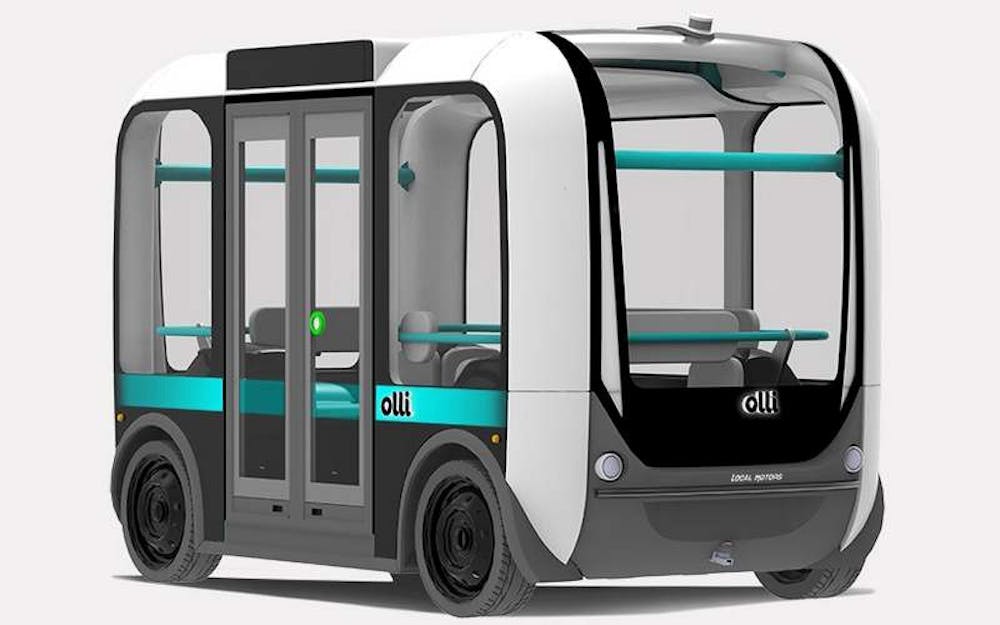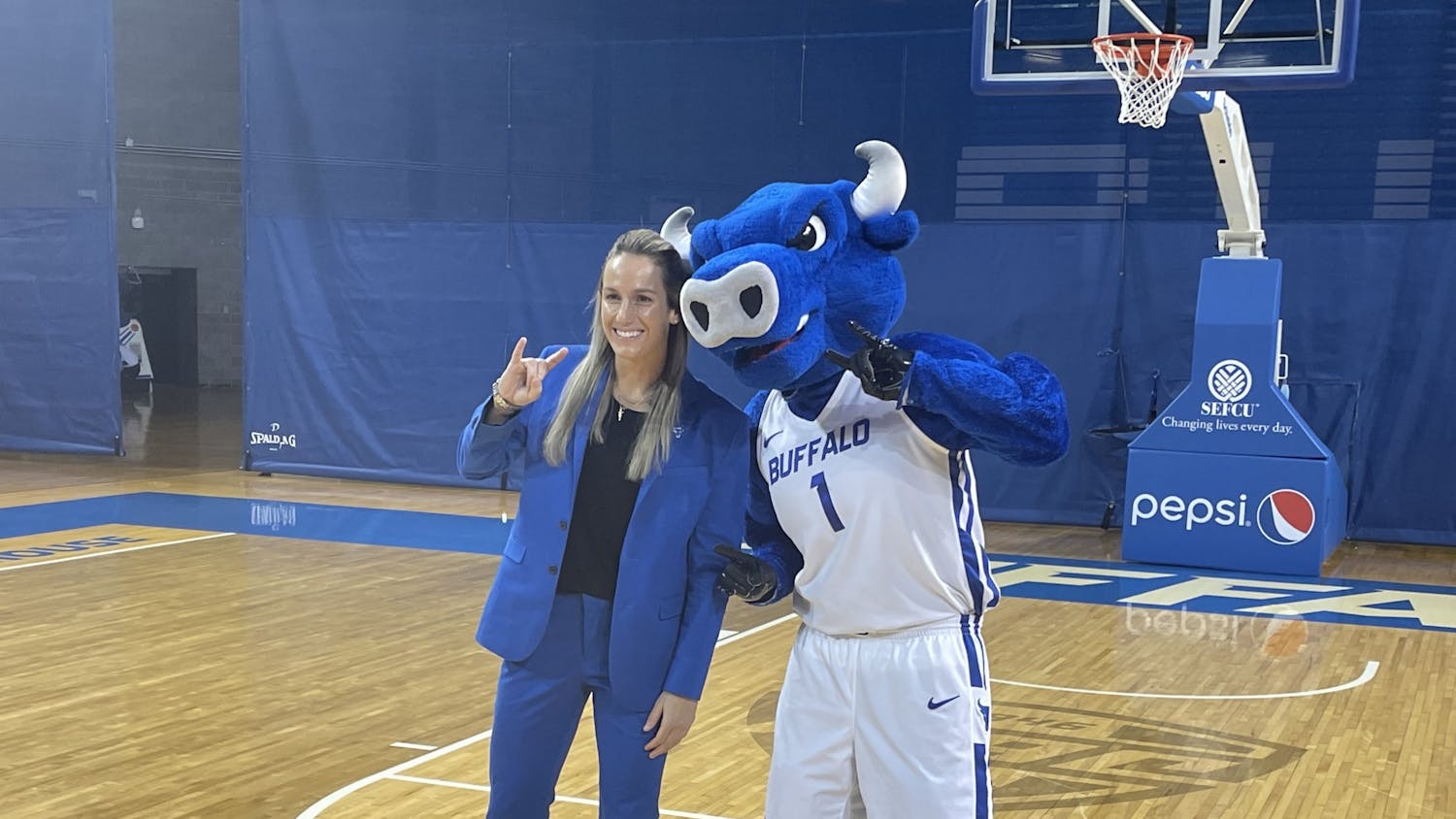Principal investigators met Thursday to discuss UB’s purchase of a driverless Olli bus. The bus, composed of 3D printed material, does not come with a steering wheel and uses 360-degree sensors to drive. The passenger bus seats 12 people and runs on an electrical charge.
The Olli bus typically costs over $300,000, but UB purchased the vehicle at a discounted cost of $250,000. The New York State Energy and Research Development Authority and the state’s Department of Transportation funded most of the purchase. The university paid for the remaining $40,000 the state couldn’t pay.
The vehicle has been tested throughout Europe in countries like Germany and Denmark. UB is one of a number of places in the U.S. getting their hands on the bus this year.
Dr. Adel Sadek; a civil, structural and environmental engineering professor, is one of the project’s principal investigators. Sadek said his project mainly concerns the technical and economic feasibility of the bus, detection of pedestrians or obstacles and whether it can run in Buffalo weather.
“We’re looking at it to complement what the Metro line has provided,” Sadek said. “The Metro line will get you to the station, but you have to make the last mile of the trip. The idea would be the autonomous vehicle would help us address this.”
Delivery of the bus, which is produced by Local Motors, is expected toward the end of April. Researchers will begin operating the bus on private or sanctioned-off roads after that. Sadek discussed the project on Thursday with transportation officials, UB facilities, Local Motors, David C. Duchscherer of Wendel Companies and others.
Project members talked about the location of the electric shuttle and how the bus could be housed off Getzville’s Millersport Highway or near the Center for Tomorrow lot.
Dr. Chunming Qiao, a SUNY distinguished professor and chair of the computer science department, said researchers are looking into how Olli can fit in Buffalo’s climate.
“We are concerned whether it can operate in a campus environment under inclement weather,” Qiao said. “These are technical issues with sensors, controls and there are in fact a lot of regulatory policy issues we are navigating through because this is one of the first times something like this has been done in the state.”
New York State law requires that the bus be operated on North Campus’ Service Road, which is not public. If researchers at UB want to do public road testing, they must apply to test through the DMV, pay $5,000,000 in liability fees and arrange for a police escort. The state allowed UB to test their newly-purchased vehicle on campus roads.
“Still, there are a lot of undefined rules and I think this project will also help in terms of our legislature and the public, for them to understand what these vehicles’ implications are,” Qiao said. “Hopefully, we can help the lawmakers to draft up reasonable laws and rules that can facilitate this kind of research and vehicle deployment in the future.”
Carnegie Mellon University, University of Michigan and Stanford University all have their own approaches to autonomous vehicle recording. Carnegie Mellon collaborated with UB for an autonomous vehicle showcase in June 2017.
The process of testing autonomous vehicles is new to UB, but Sadek is glad to take a role in the project.
“UB has always been trying to build capacity in the area of testing autonomous vehicles,” Sadek said. “We hope to be a leader in New York State in that area; nationally too. Our niche at this point is about testing and evaluation.”
Benjamin Blanchet is the senior features editor and can be reached at benjamin.blanchet@ubspectrum.com.

Benjamin Blanchet is the senior engagement editor for The Spectrum. His words have been seen in The Buffalo News (Gusto) and The Sun newspapers of Western New York. Loves cryptoquip and double-doubles.





